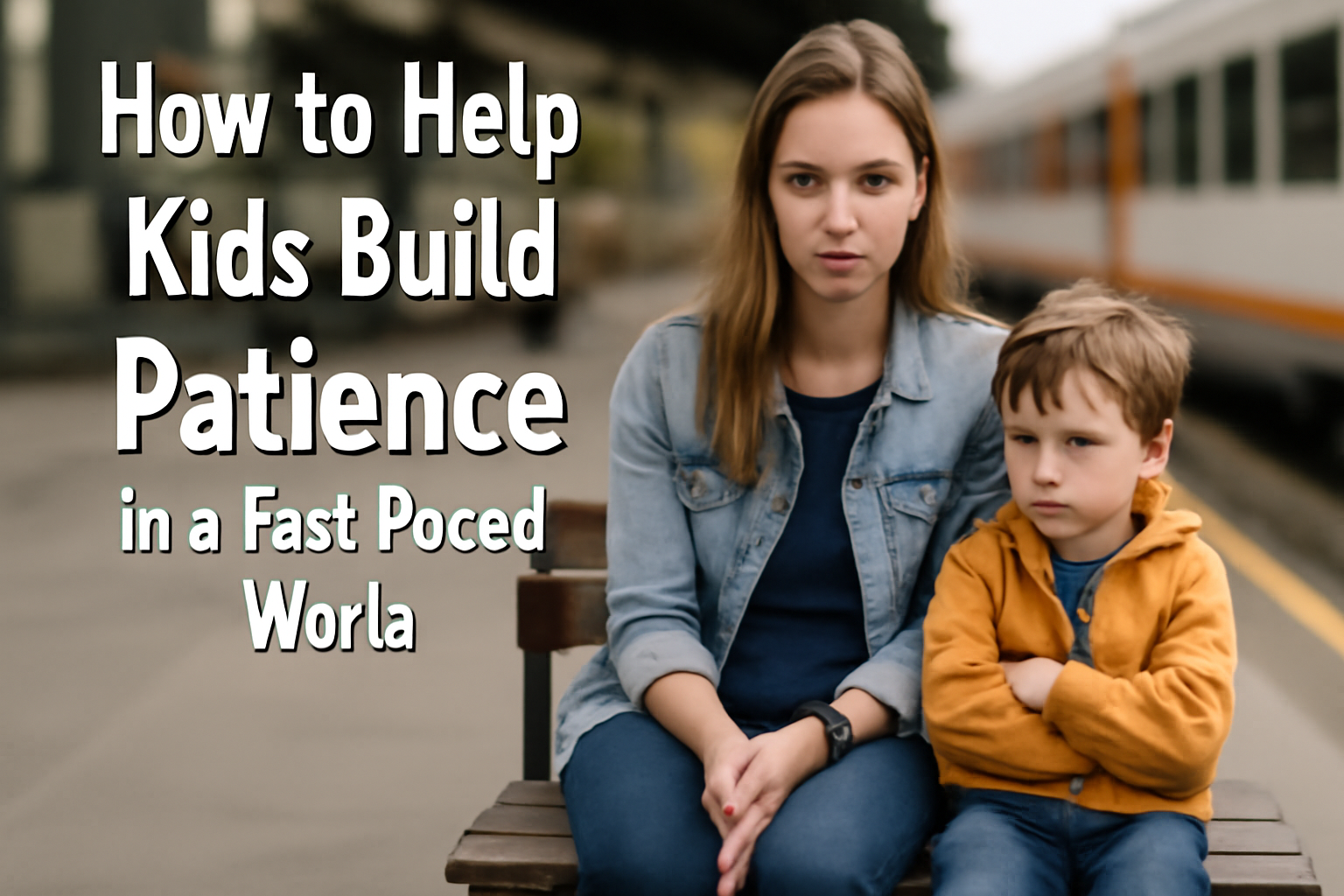We live in an age of instant gratification—streaming movies in seconds, deliveries arriving the same day, and answers available with a single click. While convenience has its benefits, it can make it harder for children to learn patience, a skill they’ll need for school, relationships, and life.
Patience helps children regulate emotions, handle frustration, and work toward long-term goals. The good news? Patience is not just a trait—it’s a skill you can help your child build with practice.
Here’s how to teach your child the art of waiting and persistence in a world that rarely slows down.
Why Patience Matters
Patience teaches kids to:
- Tolerate frustration without giving up
- Delay gratification for bigger rewards
- Strengthen focus and perseverance
- Build healthier relationships
- Develop emotional self-control
It’s a skill that supports both academic and personal success.
Model Patience in Your Own Life
Children watch how you react. If they see you staying calm in traffic, waiting politely in lines, or handling delays without anger, they’ll learn patience through your example.
Use phrases like:
- “It’s okay, we can wait our turn.”
- “Sometimes things take time, and that’s alright.”
Your calm behavior sets the tone.
Use Everyday Waiting Opportunities
Waiting is part of life—use it as practice.
- Waiting for food at a restaurant
- Standing in line at the store
- Waiting for a sibling to finish before taking a turn
Instead of giving your child a screen during these moments, encourage conversation, observation, or small games.
Teach the “Stop and Breathe” Strategy
When kids get frustrated by waiting, teach them to pause and take deep breaths.
- Breathe in for three counts, hold, then exhale slowly
- Count together while waiting
- Use simple mantras like “I can wait, I can stay calm”
This builds emotional regulation skills.
Set Small Delays and Gradually Increase
Start with short waiting times and build gradually.
- Ask your child to wait 1–2 minutes for a snack
- Delay opening a gift until after dinner
- Practice games where they take turns
As they succeed, extend the waiting periods step by step.
Encourage Long-Term Goals
Patience also means working for rewards over time. Teach goal-setting by:
- Saving allowance for a toy instead of buying immediately
- Completing a puzzle or craft over several days
- Practicing a skill (like piano or sports) for gradual improvement
This shows the value of persistence and delayed gratification.
Use Stories and Examples
Books and stories are great tools for teaching patience. Share tales of characters who waited, persevered, and were rewarded. Then discuss:
- “How did patience help them succeed?”
- “What would have happened if they gave up?”
Stories make patience relatable.
Praise Patience When You See It
Acknowledge moments when your child waits calmly or perseveres.
- “I’m proud of how patiently you waited.”
- “You stayed calm even though it took time—that’s great!”
Positive reinforcement encourages repetition.
Teach Problem-Solving During Delays
Instead of focusing on frustration, help kids ask:
- “What can I do while I wait?”
- “How can I make this time fun?”
Giving them strategies empowers them to handle waiting more easily.
Final Thought: Patience as a Superpower
In a world that rushes, patience is a superpower. By modeling calm behavior, creating waiting opportunities, and celebrating persistence, you help your child build a skill that will serve them for life.
Because patience isn’t just about waiting—it’s about growing stronger while you wait.
